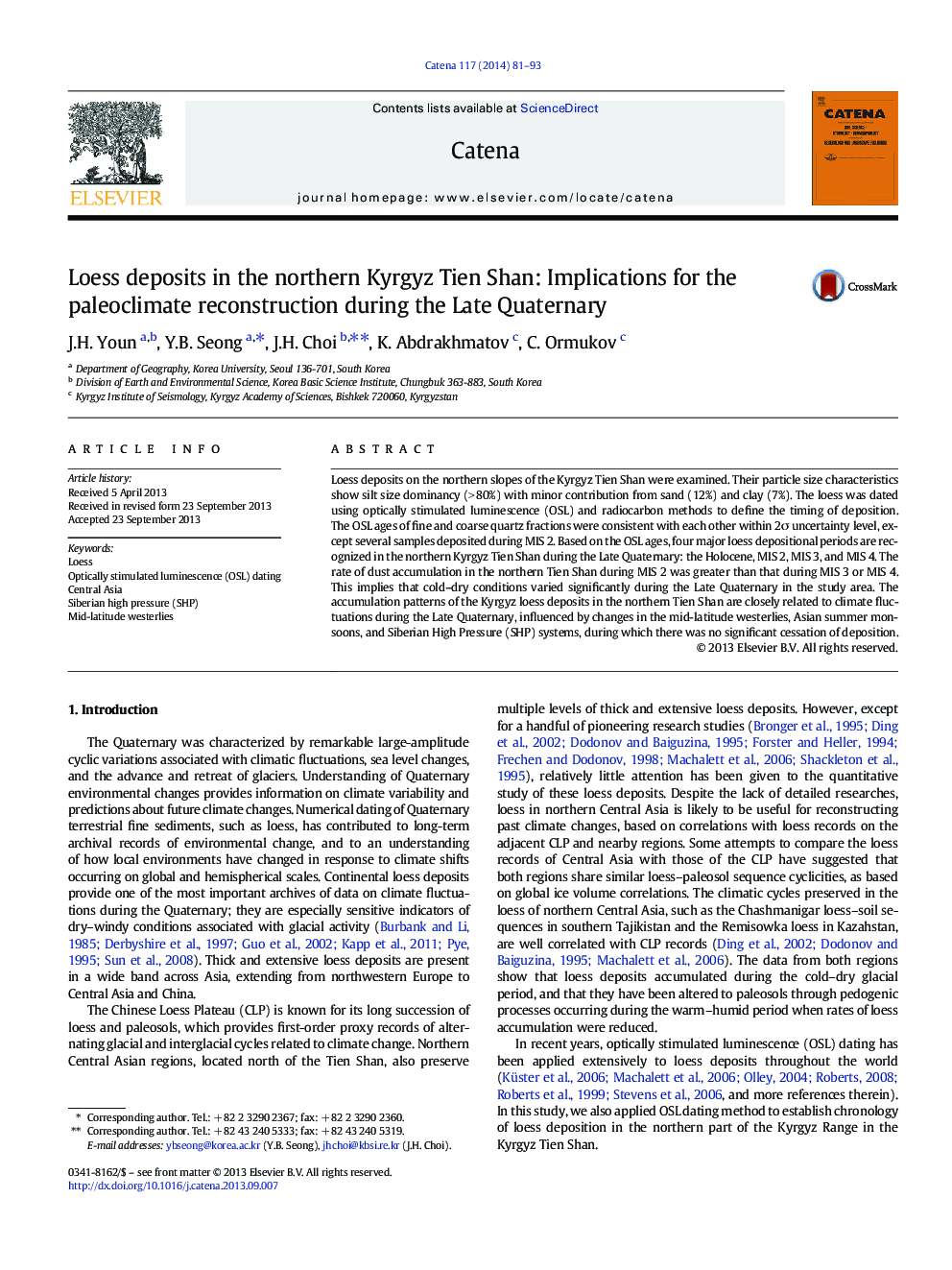| Article ID | Journal | Published Year | Pages | File Type |
|---|---|---|---|---|
| 6408058 | CATENA | 2014 | 13 Pages |
â¢We constrained the depositional ages of Kyrgyz loess using OSL dating.â¢Four major periods of loess deposition were recognized.â¢Mass accumulation rate reached the maximum during MIS 2.â¢There is a seesaw relationship between dust accumulation rate and glacial extent.â¢Moisture availability was modulated by Siberian High in northern Central Asia.
Loess deposits on the northern slopes of the Kyrgyz Tien Shan were examined. Their particle size characteristics show silt size dominancy (>Â 80%) with minor contribution from sand (12%) and clay (7%). The loess was dated using optically stimulated luminescence (OSL) and radiocarbon methods to define the timing of deposition. The OSL ages of fine and coarse quartz fractions were consistent with each other within 2Ï uncertainty level, except several samples deposited during MIS 2. Based on the OSL ages, four major loess depositional periods are recognized in the northern Kyrgyz Tien Shan during the Late Quaternary: the Holocene, MIS 2, MIS 3, and MIS 4. The rate of dust accumulation in the northern Tien Shan during MIS 2 was greater than that during MIS 3 or MIS 4. This implies that cold-dry conditions varied significantly during the Late Quaternary in the study area. The accumulation patterns of the Kyrgyz loess deposits in the northern Tien Shan are closely related to climate fluctuations during the Late Quaternary, influenced by changes in the mid-latitude westerlies, Asian summer monsoons, and Siberian High Pressure (SHP) systems, during which there was no significant cessation of deposition.
